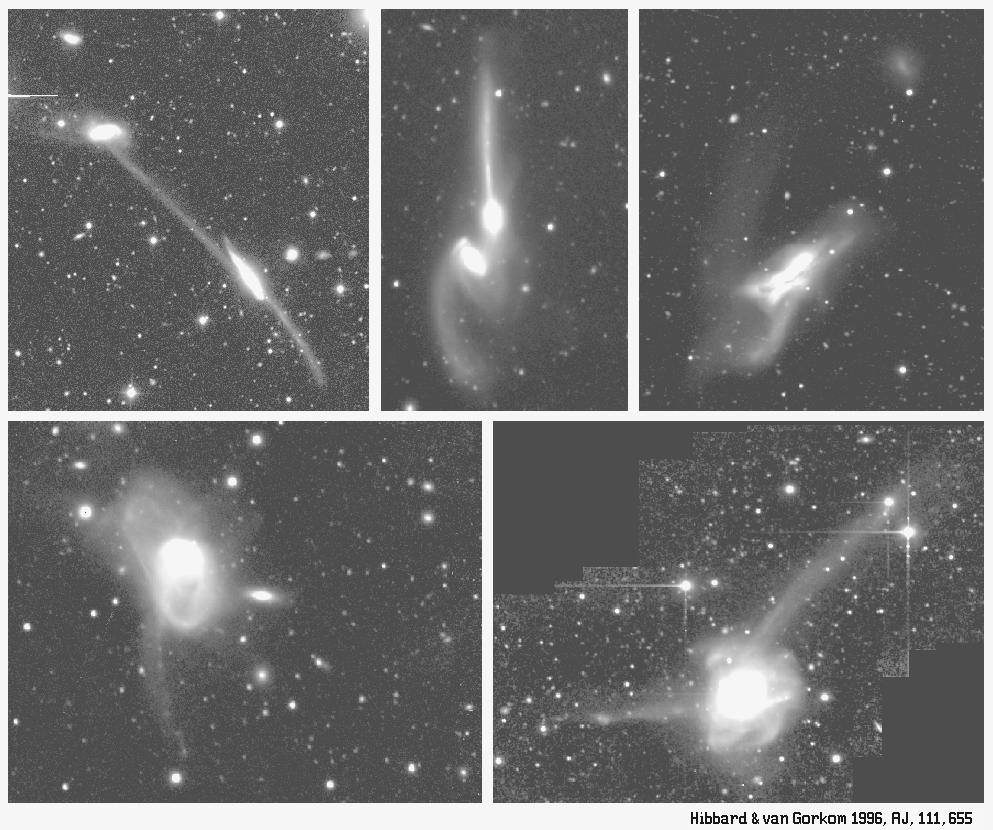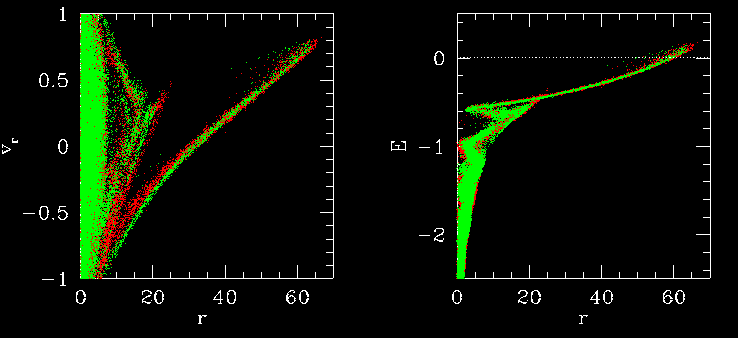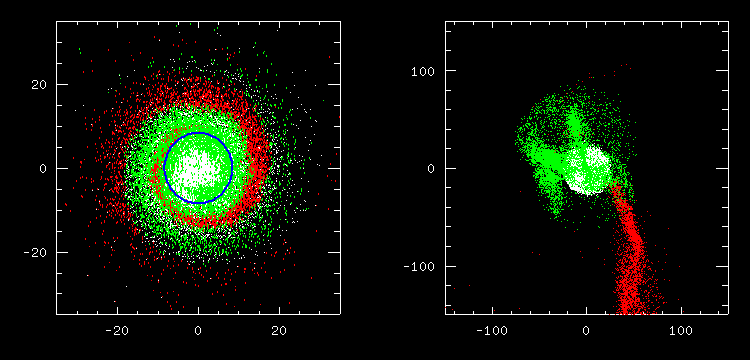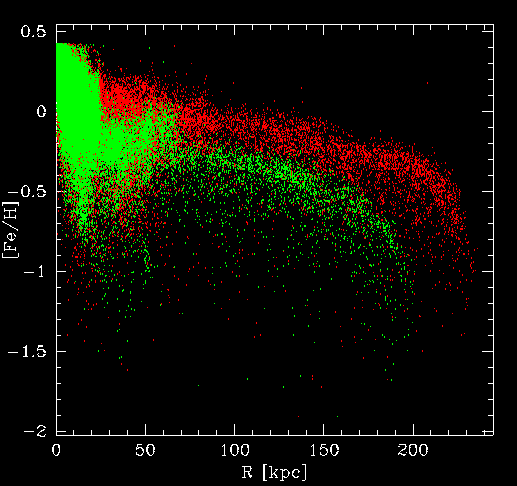They are common (but not universal) in interacting systems and can contain up to 20-25% of the luminosity of the system (eg, Schombert etal 1986).

(from Hibbard & van Gorkom 1996)
| Tidal tails (of gas and stars)
are produced during galaxy collisions from the effects of gravitational tides
and galactic rotation (Toomre & Toomre 1972, Wright 1972).
They are common (but not universal) in interacting systems and can contain up to 20-25% of the luminosity of the system (eg, Schombert etal 1986). |

(from Hibbard & van Gorkom 1996) |
| Tail material is not in simple expansion.
Most material remains bound to the remnant on very loosely bound orbits. Tails fade rapidly in surface brightness due to dynamical evolution, but do not "go away". |

|
Material in the tidal debris comes from a wide range of initial radii... (caution: color change!) |

|
...leading to the expulsion of moderately metal-rich material into surrounding space. Assume a simple model for the initial galactic stellar metallicity distribution: d[Fe/H]/dR = -0.05 kpc-1 normalized to solar at Rsun. Apply to model, view at T = 1 Gyr. |

|